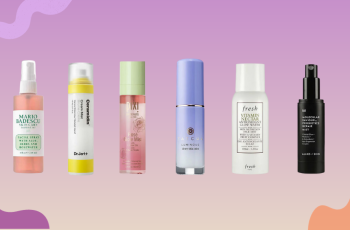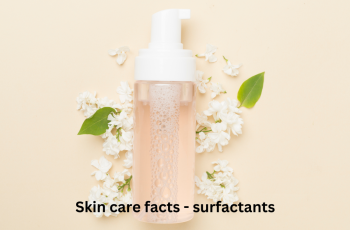
What can be combined with azelaic acid?
If you’ve been in this space for a while, you know how much attention azelaic acid and its effects on the skin have received recently.
This powerful ingredient has antibacterial and anti-inflammatory properties, making it a great ingredient for a variety of skin types, from acne-prone skin to skin with rosacea breakouts.
When applied to the skin, this acid can specifically fight problems and improve the overall appearance of the complexion.
Azelaic acid is available in a variety of formulas and is available in both over-the-counter and prescription products. The latter usually contain higher concentrations of the acid.
The main benefit of azelaic acid is that it significantly improves the symptoms of hyperpigmentation and discoloration caused by melanin. It can also relieve acne breakouts, redness, and rosacea.
If you want to learn more about azelaic acid and its benefits, read our blog post on The Beauty Insider.
Can azelaic acid be combined with other acids?
Yes, it is possible. Many experts even recommend combining azelaic acid with acids, even potent ones like salicylic and glycolic. However, it’s important to use the acid every other day.
This is the best way to harness the exfoliating and regenerating properties of these powerful acids without overly taxing or irritating the skin.
As for other acids like hyaluronic acid, you can easily combine azelaic acid with this effective moisturizer.
Don’t be fooled by the name: hyaluronic acid works differently than other exfoliating acids. Instead, it draws moisture from the surrounding skin and holds it there.
This not only counteracts the drying effects of azelaic acid, but also ensures that the lipid barrier on the surface of the skin is strengthened and moisturized.
What shouldn’t be mixed with azelaic acid?
As mentioned earlier, you can use other acids with azelaic acid. However, stacking ingredients should be avoided.
This can cause the skin to over-exfoliate and strip it of important oils and moisture. This can lead to an overproduction of sebum (the skin’s natural oil).
This can have a snowball effect leading to acne, rashes, and oily skin.
For more information on what not to mix with azelaic acid, see our blog post.
What to apply before and after using azelaic acid? This largely depends on the formula containing azelaic acid, as this determines the timing of application.
I have described the general rule for applying skincare in a previous blog post: start with the thinnest layer and work your way up to the thickest.
If you have chosen a cleanser or toner with azelaic acid, you should follow up with a serum and moisturizer.
In simple terms: always cleanse your skin thoroughly with a cleanser or face wash before applying azelaic acid. This loosens the dead skin cells clinging to the outer layer of the skin.
You can then apply azelaic acid products. This removes the dead skin cells and allows other active ingredients to penetrate into the lower layers of the epidermis.
As mentioned before, azelaic acid can have a drying effect on some skin types. Therefore, after using it, apply a serum that contains moisturizing ingredients such as hyaluronic acid and niacinamide. This helps maintain the function of the skin barrier, keeping the skin healthy, moisturized, and radiant.
Can I use niacinamide with azelaic acid?
Yes, you can use niacinamide and azelaic acid together without any problems.
Niacinamide is often considered to have similar effects to hyaluronic acid and is considered an extremely useful ingredient, especially for people prone to acne.
This moisturizing effect can reduce inflammation, hydrate the skin, strengthen the skin barrier, and keep the skin healthy.
Niacinamide and azelaic acid may be effective for the skin, but everyone’s skin is different.
Therefore, it is important to consult a doctor, dermatologist, or other professional to understand which active ingredients and percentages are best for your skin and will achieve the desired results.
Is Azelaic Acid an AHA or BHA?
Azelaic acid is not an alpha hydroxy acid like glycolic acid or lactic acid, nor is it a beta hydroxy acid like the more common salicylic acid.
While azelaic acid works similarly to these common acids, it is actually a dicarboxylic acid. Azelaic acid is produced naturally in the body using yeast in the skin.
For skin care products, it is extracted from yeast found in barley, wheat, cereals, and rye. These are then processed in a laboratory into a refined ingredient used in many skin care products.
How often should you use azelaic acid?
Azelaic acid is generally considered one of the gentler acids. How often you use it depends on you and your skin type.
If you are using this acid for the first time, I recommend that you introduce it slowly into your daily skin care routine to avoid adverse side effects.
Start using it in the evening so that your skin can develop the necessary tolerance. As an extra precaution, I would also like to remind you to apply a sunscreen with an SPF of at least 30 in the morning.
So, I hope I have answered your questions about azelaic acid and its possible combinations. If you have further questions, feel free to visit me on Instagram.

